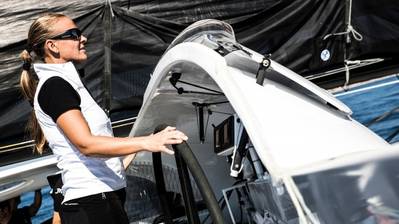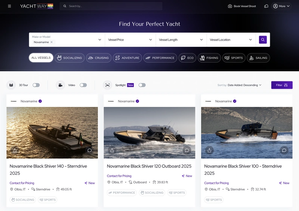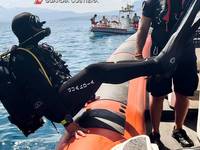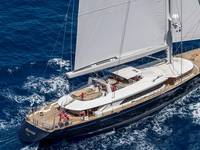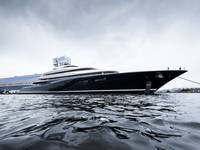Spindrift Preparing Trimaran Yacht for Atlantic Record Attempt
A team of twenty has been working in the Spindrift boatyard in Lorient to adapt the maxi-trimaran Spindrift 2 for a 2014 programme with the dual requirement of the crewed North Atlantic record attempt and the solo Route du Rhum, says Spindrift Racing.
"With Spindrift racing, we are tackling the records held by this boat, which is the largest in its class. To beat them, we must optimise the machine," Antoine Carraz, the technical manager and a sailor with Spindrift racing explains. "This year, we are doing crewed and solo. We made choices to be able to perform in both pursuits. It also allows us to explore avenues of innovation for the Jules Verne Trophy, the flagship objective of our campaign with Spindrift 2."
Structural work
Antoine begins at the bow: "The main change concerns the mast, which was shortened by six metres to make the boat more manoeuvrable when solo. With 20% less sail area, Spindrift 2 will also be lighter this season while remaining high-performance. It also involves changing how the mast is attached to the boat. Some U-bolts are removed and a new one created, for example the staysail stay, a very structural part that supports the mast.''
Losing weight: sails, wing mast, centreboard...
Like in a watch, everything is connected on a boat. Change one element and it affects everything. By reducing the rigging, the Spindrift racing team not only loses some weight up high, but also reduces the sail plan.
"Lightness is the crux of the multihull," Antoine continues. "Remove the large gennaker which is not manoeuvrable solo and is too big for the wind in the North Atlantic and it saves 200 kilos. The same for the solent sail, where we can save another 300 kilos. We also removed the wing mast. This system allows you to angle the rig from one side to the other when the trimaran is heeling. But when solo, you sail with the main hull in the water. It is heavy equipment with a very low performance gain for the solo skipper. For the North Atlantic, which will be done on one tack with a crew, we can swing the mast steadily from the start. So we decided to leave out the jacks and the hydraulic system, a new gain of 400 kilos.''
Rudders & foils
By contrast there are no big changes to the rudders and foils, which are identical, only the centreboard will be new. "In the design of the boat with the idea of racing around the world, the original centreboard was a trim tab (a rear flap like on an airplane wing to better navigate upwind),” Antoine says. “In the Atlantic like on the Jules Verne, our journey will be predominantly downwind sailing where we will sail with the centreboard raised. So, we have a new part without a trib tab, lighter by 200 kilos and with an optimised form fit for surfing."
Finally, inform Spindrift, there are dozens of details on these boats which are not contributing to the virtuous circle of the maximum load shedding. Kilos were won last year with the Spectra nets, the bunks and the kitchen will be dismantled before Rhum and a new, lighter chart table cards is also being made.
